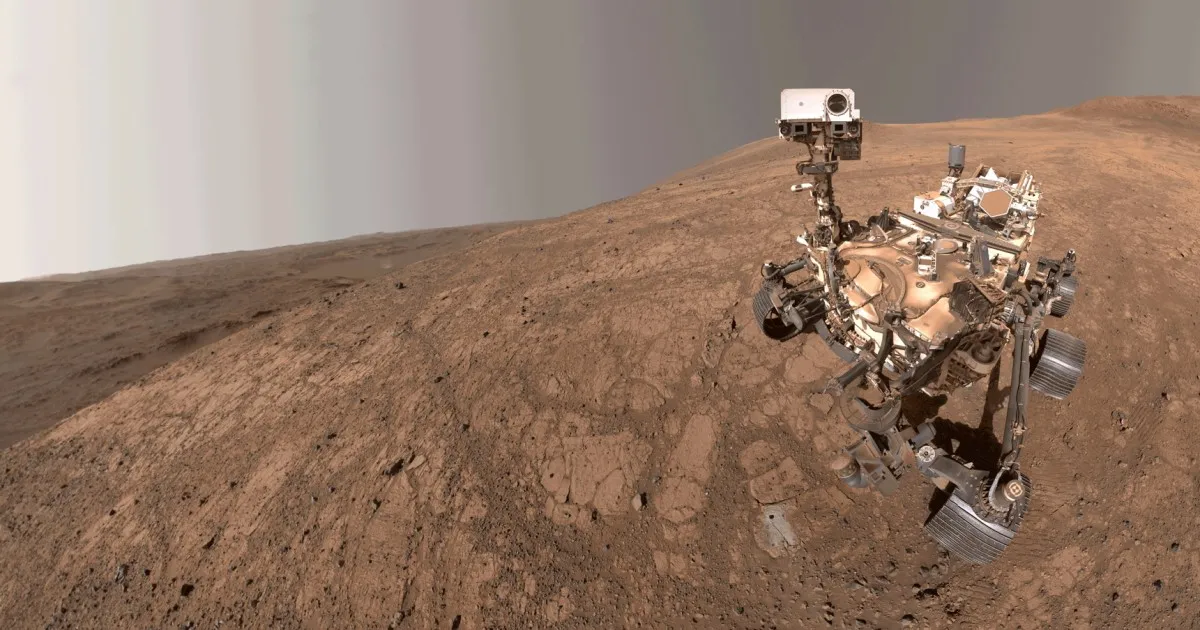
The latest selfie from NASA’s Perseverance rover on Mars has revealed an astonishing sight: a Martian dust devil. This mesmerizing phenomenon, resembling a small pale puff, appeared just 3 miles (5 kilometers) behind the rover during a recent photo session. Released on Wednesday, the selfie is a stunning composite created from 59 images captured by the camera located at the end of the rover’s robotic arm.
According to NASA, the intricate process of capturing these images took approximately one hour to complete all the necessary arm movements. Megan Wu, an imaging scientist from Malin Space Science Systems, which developed the camera, expressed her excitement about the discovery. “Having the dust devil in the background makes it a classic,” Wu stated, highlighting the significance of this unexpected guest in the photo.
This remarkable selfie not only showcases the dust devil but also features the rover’s latest sample borehole on the Martian surface. It marks a major milestone for Perseverance, celebrating 1,500 sols, or Martian days, of exploration. This duration is equivalent to 1,541 days on Earth, emphasizing the rover’s extensive journey on the Red Planet.
Throughout its mission, Perseverance has been enveloped in a layer of red dust, a direct consequence of drilling into various Martian rocks. Launched in 2020, this extraordinary rover is on a mission to collect samples from Jezero Crater, an ancient lakebed and river delta believed to hold vital clues about the possibility of past microbial life on Mars.
As Perseverance continues its groundbreaking work, it provides invaluable data that could reshape our understanding of Mars and its history. The presence of a Martian dust devil in the selfie not only adds a whimsical element to the photo but also reinforces the dynamic nature of the Martian environment.
NASA’s ongoing research and exploration efforts aim to unlock the mysteries of Mars, paving the way for potential future missions that could one day return samples to Earth. The Perseverance rover stands at the forefront of these endeavors, capturing breathtaking images and collecting critical data about our neighboring planet.